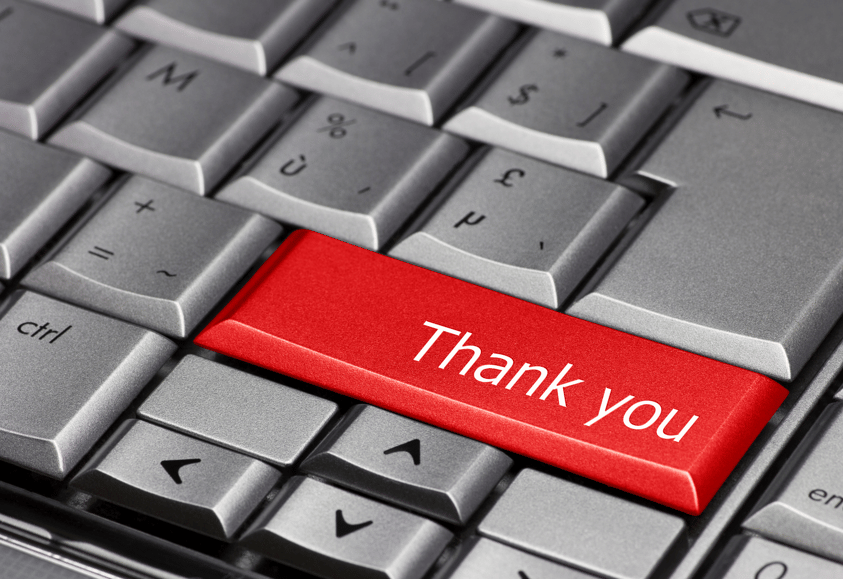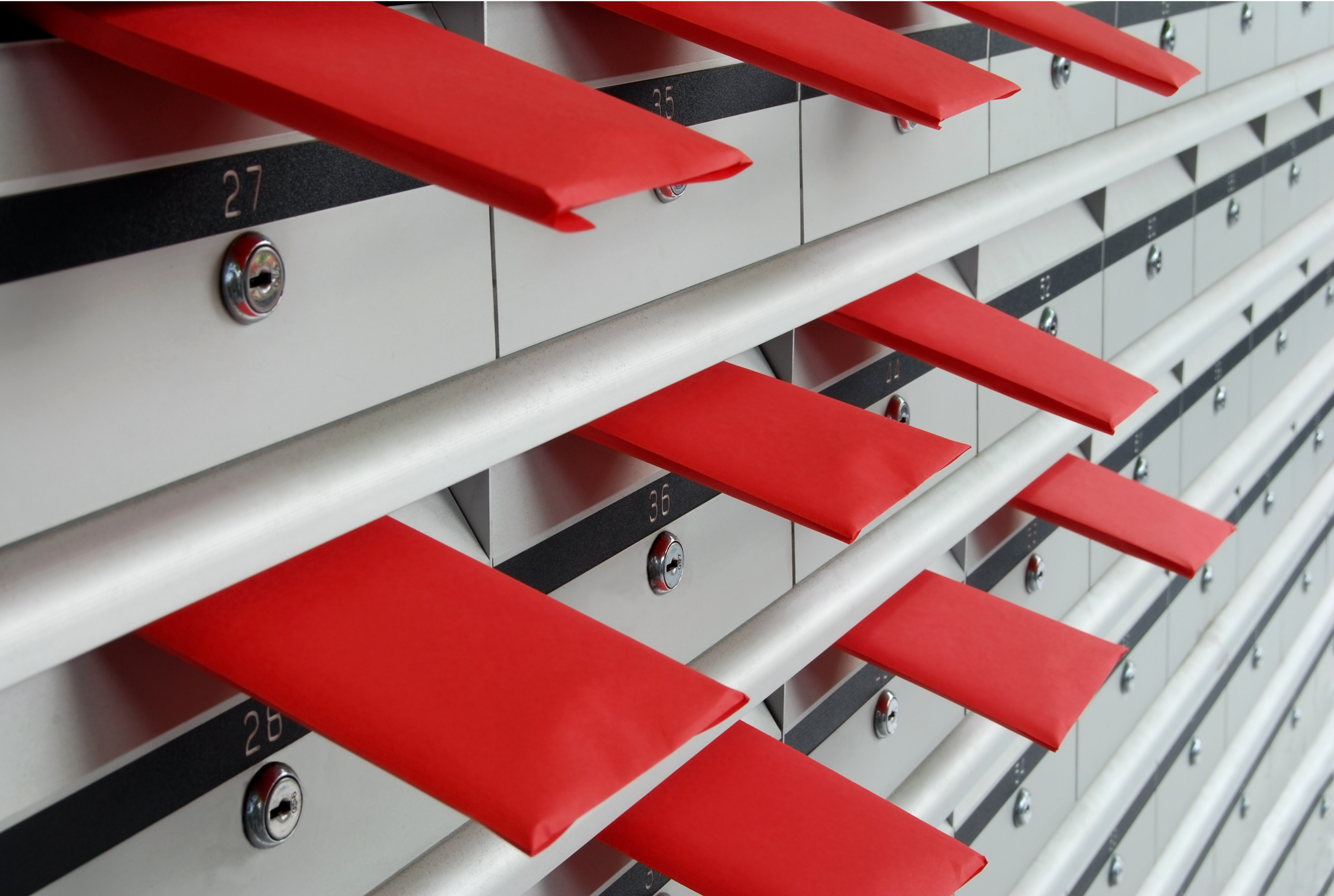
How to say “thank you” to your charity’s supporters
Thanking your supporters is one of the most important things your charity should do as part of your fundraising strategy.

Thanking is one of the most important of all stewardship activities for a charity. Not only is it a way to build your charity’s brand as communicative, grateful and thoughtful, but it also helps to build and cement donor relationships and brand loyalty.
Ultimately, this can lead to additional donations, engagement and gifting further down the line.
In this blog, our response handling and fulfilment experts at Woods Valldata share their top tips and advice on how to effectively thank your supporters with an impactful charity thanking procedure.
While you should thank your supporters as often as possible (unless they’ve specifically asked you not to), the way you thank them will depend on the type and value of support they give. In this blog, we’ve broken this down into two main types of support: one-off gifts and regular giving.
A couple of important notes before we begin, however:
As tempting as it may be to make it so, thanking your supporters is not (and should never be) used as a sales communication. It’s all about showing your gratitude to supporters for their generosity and making them feel valued and special.
This, in of itself, is a powerful way of building loyalty, fostering positive relationships, and enhancing stewardship - I.e., looking after your supporters and ensuring they have a positive supporter journey experience.
You should also make sure that any data you use to personalise your thanking materials is covered by your UK-GDPR policy and privacy notice.
So, with all that said, let’s get into how to make your supporters feel fantastic with the best charity thanking procedure possible!
How to thank your one-off gift supporters:
As mentioned above, you should thank your one-off gift donors as often as you can, as soon as you can, after they donate; however, depending on the size of their donation, this will generally take a more straightforward/simple approach.
Here are just some of the ways you can thank supporters when they send you a one-off donation:
1. A thank you letter
As discussed in our direct mail blog, letters can have a profound impact on the results of your fundraising strategy and long-term fundraising income.
There are varying levels of complexity and personalisation that can go into a thank you letter, and you can amplify or reduce this depending on the value of their donation.
This can go from a generic “thank you for your donation” note through the letterbox through to more complex triggered communications based on a detailed matrix and multiple data variables.
However you decide to do this, though, ensure that you include personalisation, such as the supporter’s name, their donation amount, and what their money will go towards based on their particular interest in your charity.
You could also include a message from the CEO of the charity with their hand-written signature printed at the bottom. Or (for higher value donors or those where the thank you is the only way you can communicate with them), you could even make it a fully “hand-written” letter.
The more personalised your communications, the more valued your supporter will feel!
The possibilities for tailoring your charity thank you letters are almost endless – particularly If you partner with a dedicated charity support services team like Woods Valldata, who can not only implement a number of personalisation methods with the use of data through their bespoke SmartThank platform, but also include effective design elements in the letter (which can be printed on-demand in full colour duplex).

2. A thank you email
If your supporters have indicated that they prefer to receive communications via email, then a thank you email can be especially powerful.
Again, this is something that can make the most of your supporter data for personalisation, and also opens lines for additional, well-thought-out communications.
For example, should a supporter make a second one-off donation in the future, you can use the data previously collected from their first donation to acknowledge that they’ve donated before, and you’re delighted that they have again.
This will ensure they feel noticed as an individual, paid attention to and are important to you, rather than if you sent the same email as the first time, which might make them feel as though their first donation was forgotten about.
This may seem complicated, but with the data collection and automation processes we have in place sing the SmartThank platform as part of our response handling service here at Woods Valldata, it couldn’t be simpler!
3. Give them a call
It’s amazing how far a phone call can go. For example, during the first coronavirus lockdown, some charities chose to use their telemarketing budget to simply call supporters and see how they were.
As shared by Jo Stone from Battersea in our first Covid webinar, this non-ask strategy actually led to some sizeable donations!
So, if a supporter has given you a large donation (and have given permission to be called), it's worth picking up the phone to say thank you sooner rather than later.
4. Send a gift
In some cases, sending a relevant thank you gift for a one-off donation can also be impactful – perhaps a keyring, wrist band or supporter pin.
Not only will it give them something to show friends and family (thus raising awareness of your charity), but it will also give them something to look back on with pride – something that will be great to have associated with your charity.
How to thank your regular giving supporters
Saying thank you to your regular giving supporters will vary somewhat to thanking one-off donors.
As well as keeping stewardship at the forefront, your thank you should also be relevant for the type of support they’re giving. So, as well as considering all the above thanking methods, you should also include the following:
1. A welcome pack
As the first line of communication from your charity, a welcome pack is probably the best way to thank regular giving supporters at the start of their journey with you.
In fact, Woods Valldata’s amalgamated campaign analysis across all our regular giving programmes found a 40% reduction in cancellation rates with the introduction of a welcome pack and subsequent triggered communications (such as update letters and emails)!
Some examples of things you can include in here are a personalised thank you letter (as above), a leaflet with more information about the charity and what you’ll be able to achieve with the amount of money they are donating per month, and some charity branded freebies, such as address stickers, pens, badges, wrist bands and so on.
2. Automated ongoing communications
Following the welcome pack correspondence, in line with your stewardship approach, you should also ensure you continue to thank your donors at key milestones throughout their supporter journey.
At Woods Valldata, we can help with this by setting up automated “thank you” emails or letters (depending on your donor’s preferred communication method) that are sent every month once their donation comes through or at key times in the supporter journey plan.
We’ll then amend these each time to incorporate fresh content that speaks strongly and directly to the donor – this is far more likely to make the supporter feel valued than if you simply send the same message each month!
3. If they’re playing your charity lottery...
In our experience at Woods Valldata, it’s actually best to thank your lottery supporters before their first payment is taken to reduce the number of no-shows or cancellations. You can do this via the welcome pack and automated communications methods outlined above.
You should also consider phone calls at key times during their time playing the lottery to thank your supporters for playing; we’ve found that retention can be improved by as much as 25% by calling donors to thank them, as it provides them with a positive experience (you can find out more about this in our Prize Led Fundraising Webinar).
How to track the impact of your “thank-yous”
Just as important as thanking your donors, whether for one-off gifts or regular giving, is tracking the impact of those “thank-yous”.
While the impact of thanking is notoriously difficult to measure, it’s not impossible (as some of the stats from Woods Valldata above show).
Some things you can try include:
- adding a control or fallow cell to your thanking strategy
- tracking against previous thank you strategies
- supporter satisfaction surveys/survey around communications
This will ensure you understand the true impact of your activity, and enable you to continue using the methods that perform well whilst improving on those that don’t.
As you can see, there are a lot of different variables to take into consideration when it comes to creating the best charity thanking procedure.
However, due to the phenomenal impact that thanking can have, it’s essential that you start including thanking as part of your programme strategy, testing to find the right balance and approach for your supporters.
This is where our response handling team at Woods Valldata comes in; they work with you to identify the best approach for your charity and programme and take the implementation of it wholly off your hands so that you can focus on bringing in new donors, knowing that your current ones are being thanked properly and, as a result, feel truly valued.
In fact, our charity clients have achieved some incredible outcomes as a result of our services!
For example, when working with Alzheimer’s Research UK, sending thank you letters to donors was one of the most impactful parts of our service, as it helped negate any concerns from donors over delays in processing their gifts. In turn, this minimised the need for any query resolution in the charity’s supporter services team.
If you too would like support with your charity’s supporter journeys, or any other aspect of response handling and fulfilment, arrange your free consultation with us today.
Categories
- charity fundraising (50)
- Lottery (40)
- Income Generation for Charities (38)
- Raffle (37)
- Appeal response handling (31)
- Response Handling (27)
- fundraising insights (23)
- charity gaming (19)
- charity raffle (17)
- Fulfilment (16)
- charity insights (16)
- Compliance (12)
- Company News (11)
- benchmarks (10)
- Direct Debit (9)
- Services (8)
- creating a fundraising strategy (8)
- Gambling Act (5)
Archives
- March 2020 (5)
- May 2022 (4)
- October 2022 (4)
- January 2023 (4)
- June 2023 (4)
- May 2024 (4)
- June 2024 (4)
- March 2021 (3)
- April 2021 (3)
- July 2023 (3)
- August 2023 (3)
- April 2024 (3)
- July 2024 (3)
- November 2025 (3)
- June 2020 (2)
- August 2020 (2)
- October 2020 (2)
- November 2020 (2)
- November 2021 (2)
- January 2022 (2)
- February 2022 (2)
- February 2023 (2)
- March 2023 (2)
- September 2023 (2)
- December 2023 (2)
- February 2024 (2)
- March 2024 (2)
- February 2025 (2)
- July 2025 (2)
- December 2025 (2)
- June 2015 (1)
- November 2017 (1)
- February 2020 (1)
- April 2020 (1)
- May 2020 (1)
- July 2020 (1)
- September 2020 (1)
- May 2021 (1)
- June 2021 (1)
- August 2021 (1)
- September 2021 (1)
- October 2021 (1)
- December 2021 (1)
- March 2022 (1)
- April 2022 (1)
- June 2022 (1)
- July 2022 (1)
- August 2022 (1)
- September 2022 (1)
- December 2022 (1)
- May 2023 (1)
- October 2023 (1)
- November 2023 (1)
- January 2024 (1)
- September 2024 (1)
- January 2025 (1)
- March 2025 (1)
- September 2025 (1)
- October 2025 (1)
